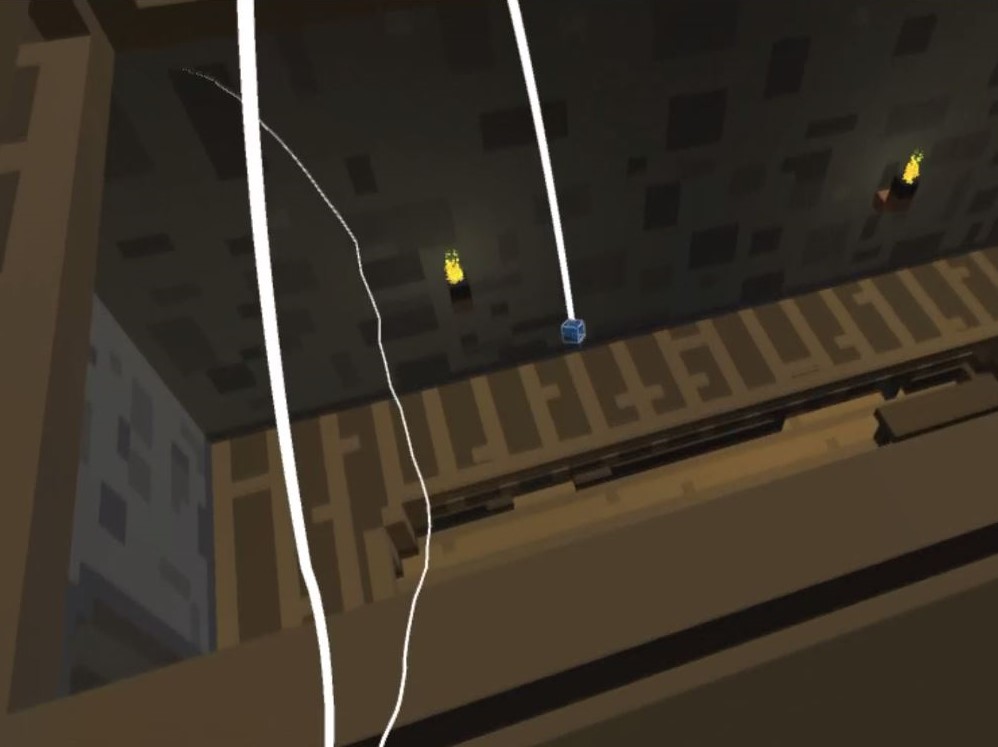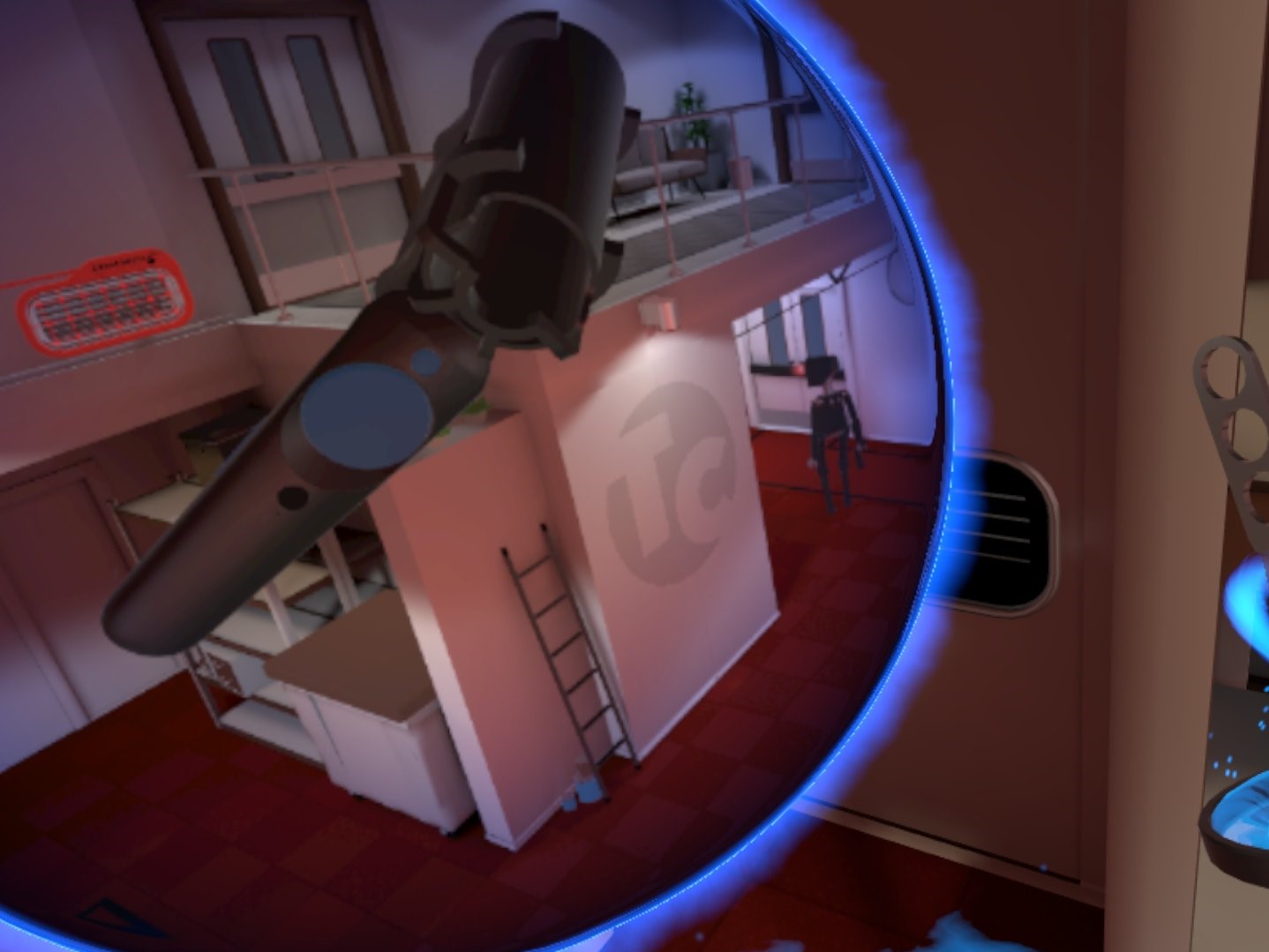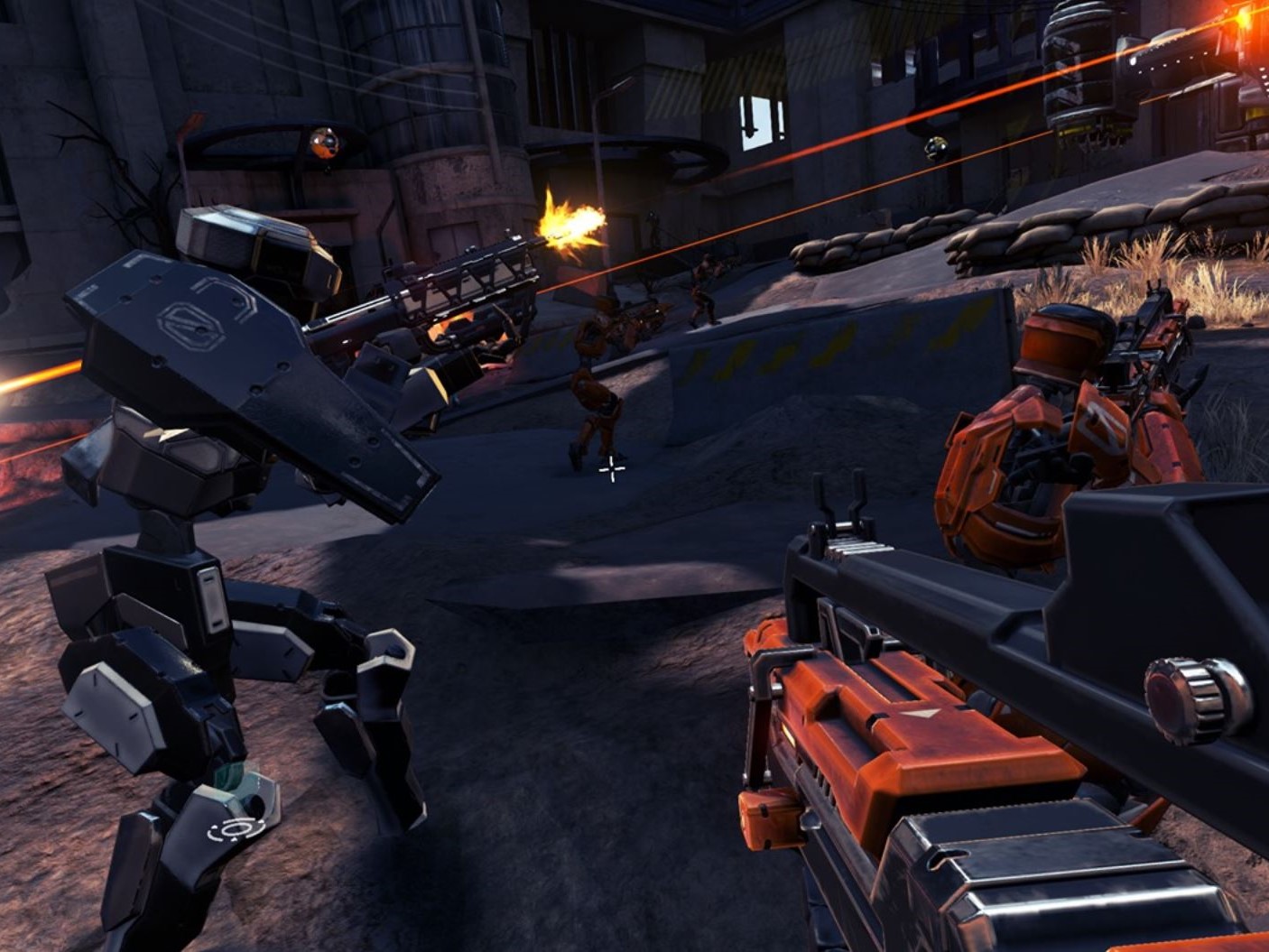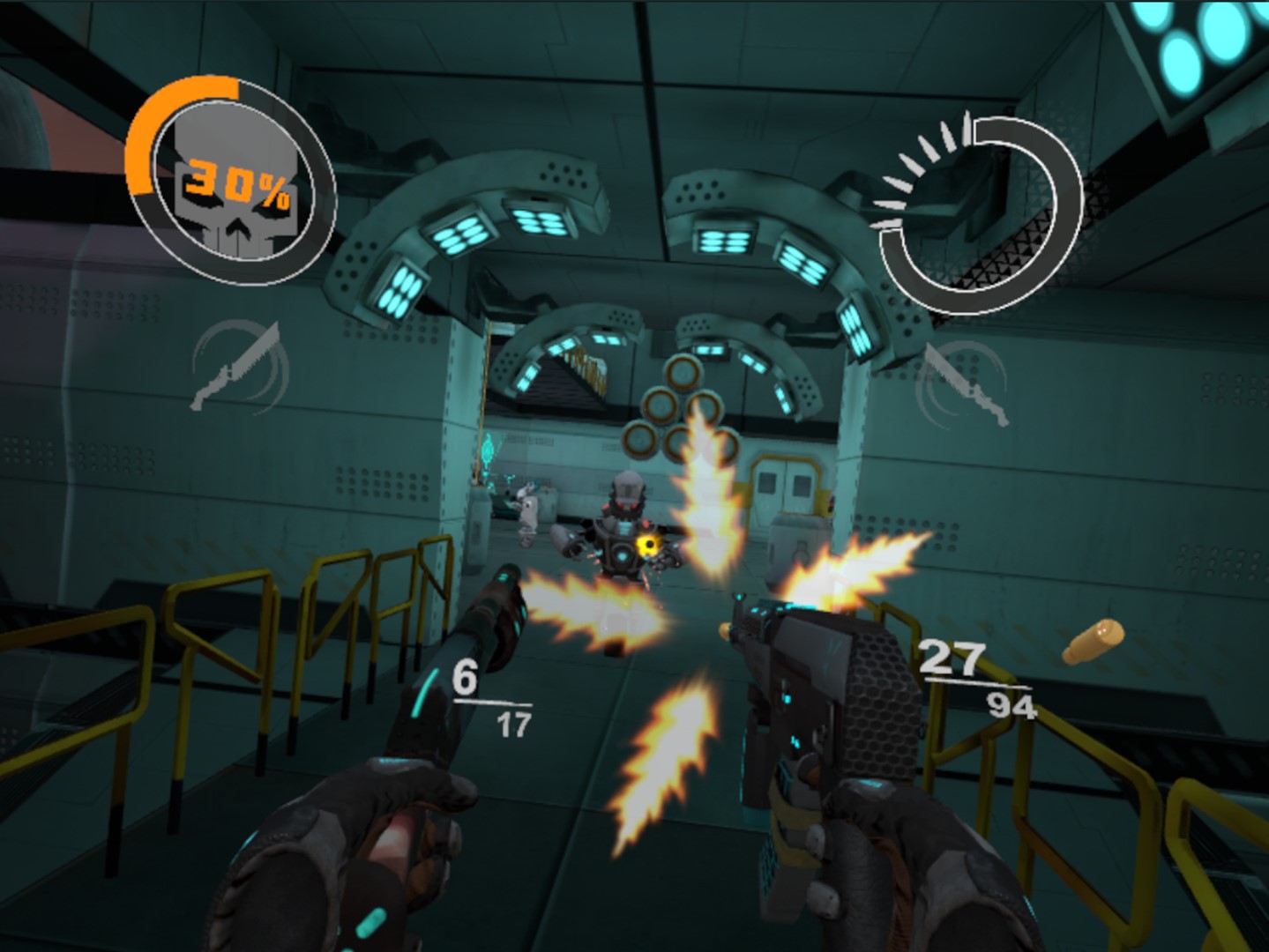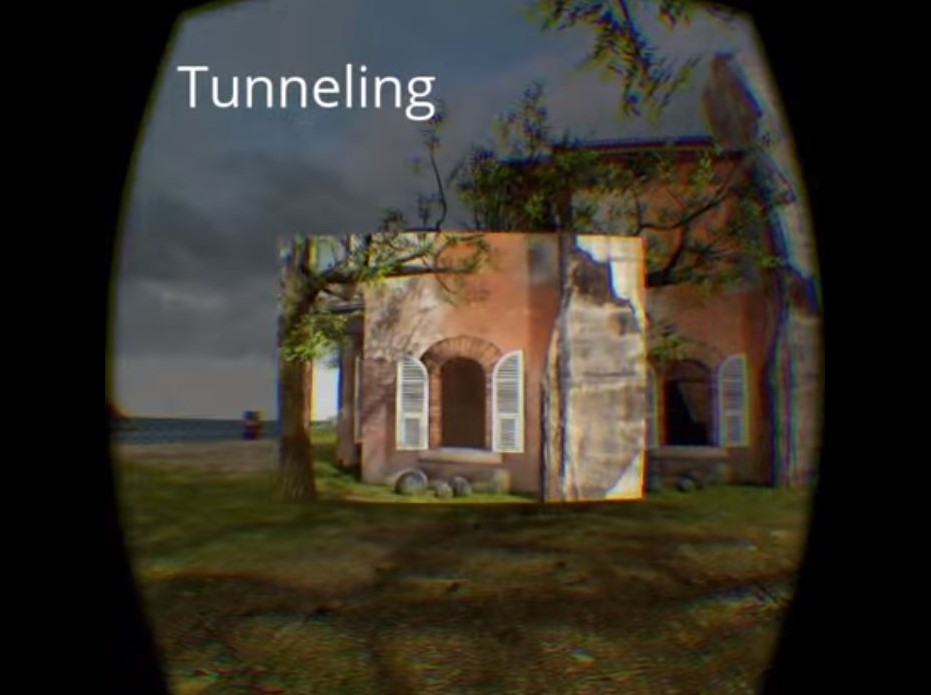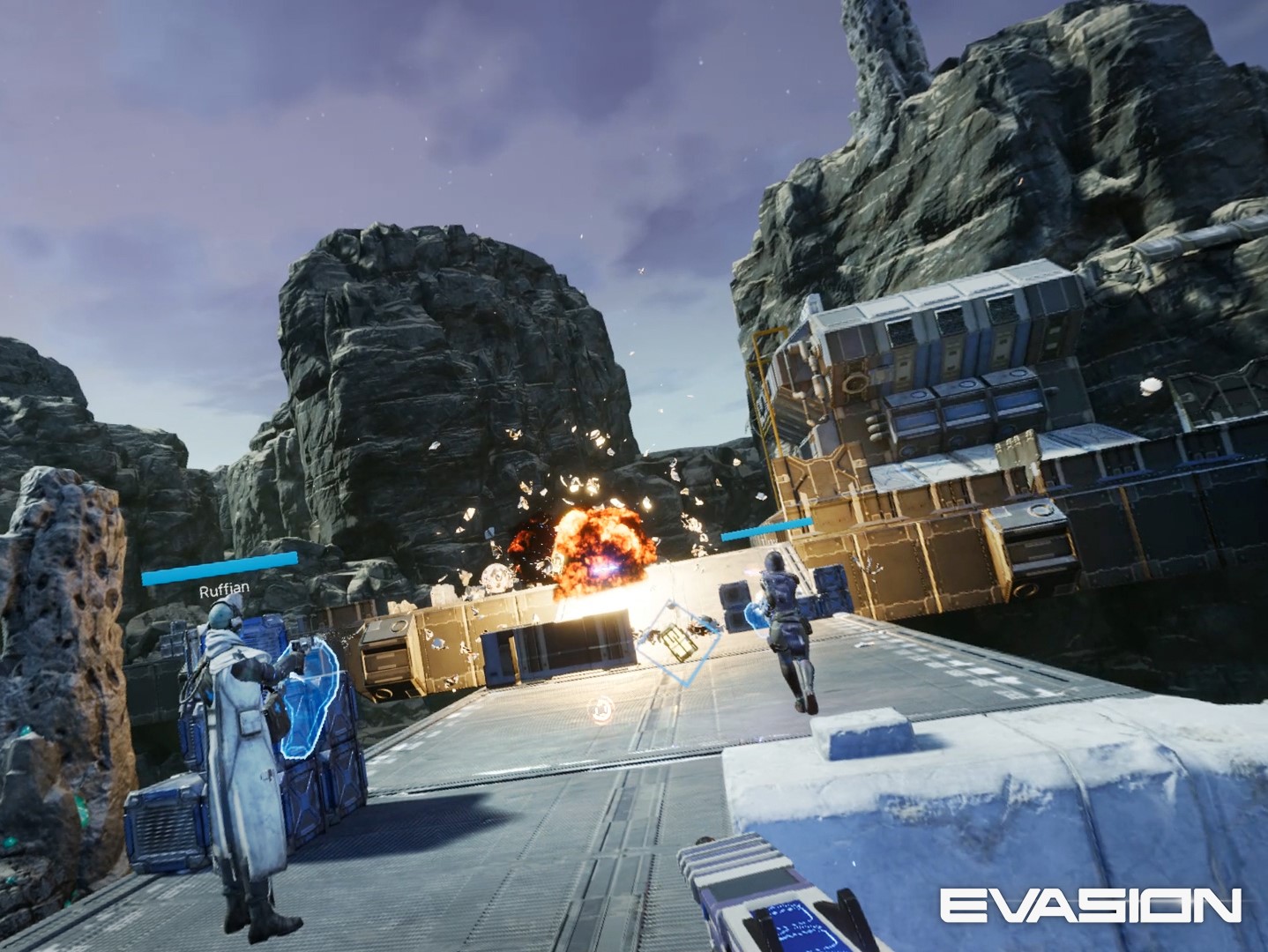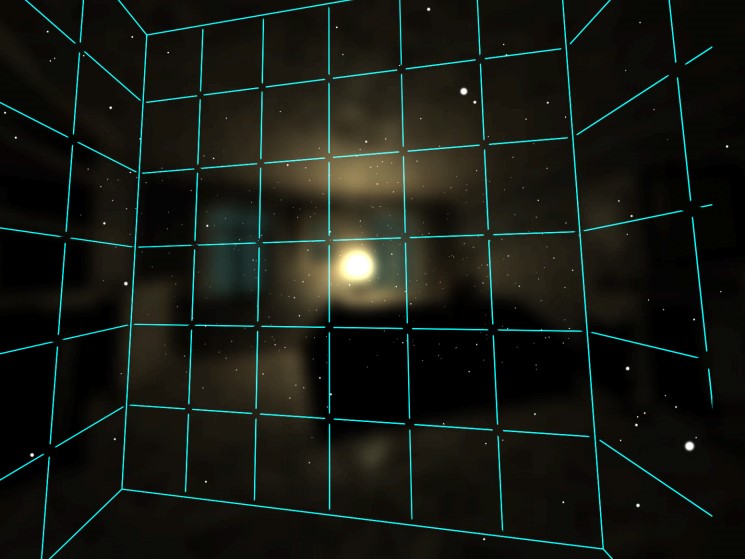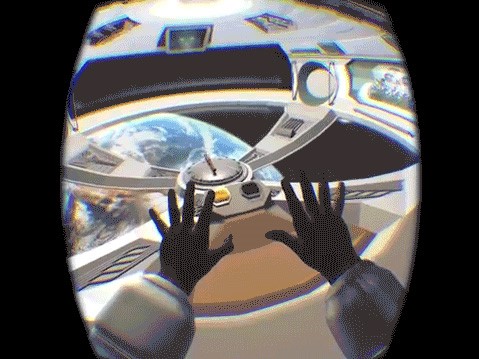Do the Locomotion: The 19 Ways You Walk and Run in VR Games
Thrown Object Teleporter
While many people define VR locomotion as a problem, developers are using it as an excuse to think outside the box to come up with creative solutions.
Thrown Object Teleporter works exactly the way the name implies. You get a throwable object that teleports you to where it lands. Tossing an object isn’t as accurate as pointing a reticle with your motion controller, but it offers movements that aren’t possible with a reticle, such as tossing the object against a wall to bank it around a blind corner.
Spells ‘n’ Stuff offers a great example of how Thrown Object Teleporter locomotion works.
MORE: Best Virtual Reality Headsets
MORE: All Virtual Reality Content
MORE: Virtual Reality Basics
Teleport – Preview Cam
One of the first teleportation methods that we experienced came from Neat Corporation’s Budget Cuts demo. In Budget Cuts, you get a gun that shoots portals that you can move through. The gun’s portal ammo is heavy and affected by gravity. It also bounces off walls like the Thrown Object Teleporter method.
Get Tom's Hardware's best news and in-depth reviews, straight to your inbox.
Unlike the Thrown Object Teleporter, Budget Cuts’ portal gun offers a preview camera that lets you see the surroundings before moving to the new location, and nothing is stopping you from taking another shot if the landing zone is undesirable.
MORE: Best Virtual Reality Headsets
MORE: All Virtual Reality Content
MORE: Virtual Reality Basics
Host to Host Teleportation
High Voltage System introduced a unique locomotion system at GDC 2017 when it demonstrated Damaged Core for the first time. The game features a somewhat parasitic movement system in which you take control of different host bodies to move from place to place. When you’ve exhausted your current hosted body’s usefulness, move on to the next one to continue your journey.
MORE: Best Virtual Reality Headsets
MORE: All Virtual Reality Content
MORE: Virtual Reality Basics
Armswinger
Armswinger locomotion is a natural-feeling solution for traversing long distances in VR. To move, press a button on your controller and then swing your arms at your sides like you would when you run. The faster you swing your arms, the faster you’ll move in-game.
Armswinger locomotion works well for non-shooter games, but surprisingly, it works well for FPS games, too. Game Cooks proved as much in September with the release of Vindicta, which lets you move around while swinging one arm at a time, leaving a hand free to handle your weapon.
MORE: Best Virtual Reality Headsets
MORE: All Virtual Reality Content
MORE: Virtual Reality Basics
Tunnelling
Tunnelling is an experimental locomotion technique that is supposed to prevent motion sickness. We’ve never seen it used in a game, but a demonstration of the system surfaced on YouTube in 2015.
The Tunnelling locomotion system limits the feeling of movement by confining the moving animation to a focused part of your view. You navigate to the new location within the small window, while the environment around you remains stationary. When there’s no motion in the inner scene, the world around you morphs into the new location.
MORE: Best Virtual Reality Headsets
MORE: All Virtual Reality Content
MORE: Virtual Reality Basics
Head-Bobbing Locomotion
Head-bobbing locomotion is another movement system that takes advantage of a somewhat natural movement derived from walking or running. When you walk or run, your head naturally bobs up and down, and the team at Archiact took advantage of that motion to create a new locomotion system for its upcoming FPS game Evasion.
Head-bobbing locomotion is similar to armswinger locomotion, though it leaves both your hands free to handle weapons and items. You can activate the motion by bobbing your head up and down, or by running in place.
MORE: Best Virtual Reality Headsets
MORE: All Virtual Reality Content
MORE: Virtual Reality Basics
Walkabout Locomotion
Walkabout locomotion, developed by Tekton Games, is another form of redirected walking. However, with this system, the environment rotation is a manual process, not a behind-the-scenes process.
The Walkabout system allows you to pace back and forth within your physical space while continuing a straight path in the game. When you reach the limitation of your room-scale play area, press a button on the controller to “freeze” the world around you, so that you can turn around without changing directions in the game.
MORE: Best Virtual Reality Headsets
MORE: All Virtual Reality Content
MORE: Virtual Reality Basics
Redirected Walking
Walkabout Locomotion, developed by Tekton Games, is another form of redirected walking. However, with this system, the environment rotation is a manual process, not a behind-the-scenes process.
The Walkabout system allows you to pace back and forth within your physical space while continuing a straight path in the game. When you reach the limitation of your room-scale play area, press a button on the controller to “freeze” the world around you so that you can turn around without changing directions in the game.
MORE: Best Virtual Reality Headsets
MORE: All Virtual Reality Content
MORE: Virtual Reality Basics
Superman Locomotion
Superman Locomotion isn’t a popular VR locomotion solution, but it’s already been around for more than two years. The only game that we know of that uses Superman Locomotion is an old Leap Motion-enabled title called Weightless from a developer named Martin Schubert.
Superman Locomotion works exactly how you would expect. Hold out your hands in front of you to move forward, and point your hands in the direction you wish to fly the virtual environment.
MORE: Best Virtual Reality Headsets
MORE: All Virtual Reality Content
MORE: Virtual Reality Basics
Kevin Carbotte is a contributing writer for Tom's Hardware who primarily covers VR and AR hardware. He has been writing for us for more than four years.
-
AgentLozen I have very little experience with VR but I assume that the author spent a lot of time in VR while doing research for this article. How would you rank these styles of locomotion?Reply -
husker If VR is ever going to become mainstream, this will need to be standardized and remain immersive. People are NOT going to pay the premium price and go through the effort to set up a VR space just so they can be forced to "teleport" or "dash" or "sprint" or whatever in an un-immersive way. After ruling out a warehouse as a play space or an omni-directional treadmill, there is only one simple way to do this. and that is to track one or both feet. Why this isn't even considered is beyond me, especially since they came so close with the "arm swing" and "head bobbing" methods. Any other method should be reserved for people who have a physical disability or just don't feel like putting out the effort for real VR.Reply -
junglist724 And this is why simracing and flight sims are the only truly good gaming applications for vr right now. The locomotion problem is eliminated by peripherals.Reply -
photonboy Husker,Reply
It's already possible to track limb movement. Even the KINECT can do this for the XBOX.
Here's a list of products that are either available or in development for full body VR tracking: http://virtualrealitytimes.com/2017/02/21/list-of-full-body-vr-tracking-solutions/
And "mainstream" would not describe movement-based VR anyway. Only a very small percentage of people would have the capability to setup a sufficiently large area to walk around in. Most people will surely just SIT. -
kcarbotte Reply20785359 said:I have very little experience with VR but I assume that the author spent a lot of time in VR while doing research for this article. How would you rank these styles of locomotion?
I believe that teleport mechanics work well, but the best solutions are Armswinger and Head-Bobbing.
Survios also combined several locomotion systems and called it the Fluid Locomotion System, which includes armswinger, grabbing the environment and the superman locomotion all together. That solution works really well. You can try it in Sprint Vector.
